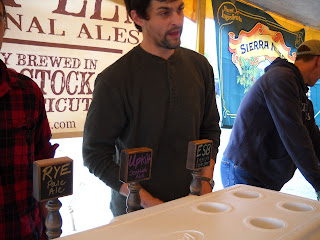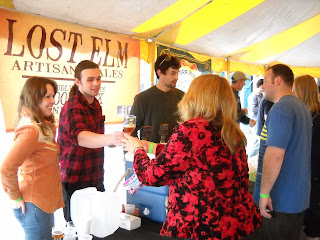Well, I figured I’d bring this thread back from the dead and give an update on what’s been going on in the past few years (can hardly believe it’s been that long since we first started this venture).
Life tends to get in the way, and progress on the brewery moved slowly. We spent a lot of time in the planning stage, trying to determine exactly what the best plan would be for us. We did our research, reading the TTB regs at lunch and doing market research at dinner. While we were getting our strategy together, the law changed in Connecticut. Breweries can now serve beer in their tasting rooms, where before they could only give free tastings (along with a mandatory tour). So now we can serve pints of our beer directly to the consumer right over our own bar. It was a huge game changer, and it made our idea of a little 1.5 bbl nano brewery feasible from a profit standpoint.
So armed with this new law we set to work opening the brewery in Woodstock, CT. Unfortunately Woodstock isn’t used to having any kind of real manufacturing businesses, and when we went to the town for the required permitting, they essentially stopped us in our tracks. We could do it, but we’d need special permitting. The first step was a survey and map of the building and grounds by an engineer, somewhere to the tune of $12,000. And that was before we put one shovel in the ground.
Needless to say, we couldn’t stay there. To say we’re doing this on a shoestring is generous, and we just couldn’t afford that much money. Luckily, the neighboring town of Stafford has been extremely helpful and welcoming, so we now rent a space near the center of town and are starting the demo on the new home of Lost Elm Brewing Company this week.
The new space is bigger, closer to the highway, has a bathroom, water plumbed in, floor drains, and a separate room big enough for our fermentation room and cold storage. The landlord has been very helpful and will most likely be helping us put together our brewhouse. It’s been a long time coming, but the ball is really rolling for us. Hopefully we can get all our paperwork in soon and get brewing within a few months.
We’ve used the resources here on homebrewtalk countless times, and we’re still coming on these boards to look up answers to questions or get ideas. If anyone has questions as they’re starting their own venture, feel free to ask us, we’ve probably gone through a lot of the same stuff. Look for more posts on the build, and the brewhouse construction in the coming days and weeks. Thanks to everyone on HBT!













![Craft A Brew - Safale S-04 Dry Yeast - Fermentis - English Ale Dry Yeast - For English and American Ales and Hard Apple Ciders - Ingredients for Home Brewing - Beer Making Supplies - [1 Pack]](https://m.media-amazon.com/images/I/41fVGNh6JfL._SL500_.jpg)







































































